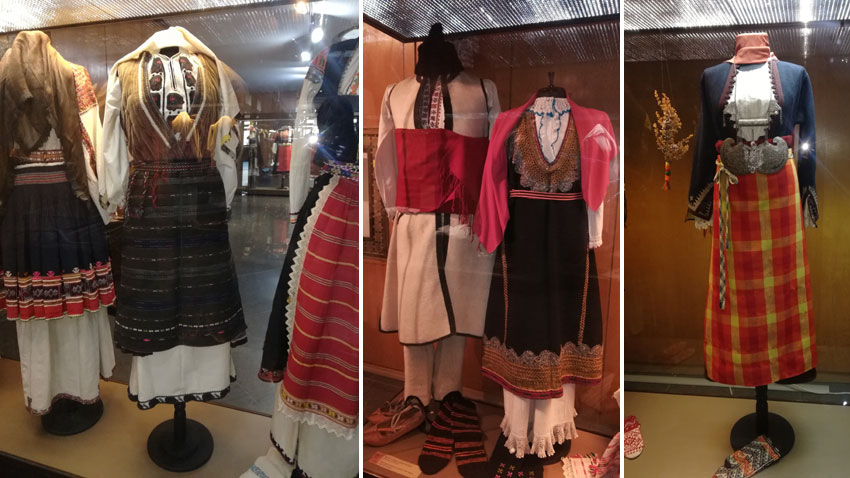Women’s traditional clothing in Bulgaria and European fashion
“Covering the hair with a headscarf was preserved most of all as a ritual function in some traditions – “lazaruvane”, wedding rituals,” Ellie Gutseva explains. “In towns hats were in and there was a period when they were very popular, taking all sorts of flamboyant and fantastic shapes and sizes. But by the 1920s and 1930s things had definitely changed radically.”

“Until the time of the liberation, Bulgarian women wore the traditional costume mostly in villages. It consisted of chemise and outer skirt open at the front (called saya), or one-piece pinafore. The chemise was lavishly embroidered, and covering the head was an important element of the way a married woman dressed. The costume included accessories, like socks, apron, sash, belt and items of jewellery which depended on the woman’s social standing and whether she was married or not.”

“The embroidery which was very labour-intensive and which was imbued with a great deal of symbolism through the period of the National Revival, was beginning to decline, to be replaced by lacing on sleeve rims and skirt hemline. In villages the items of jewellery continued to convey different meanings, though they were no longer ornate or made of precious metals,” Ellie Gutseva says.
That was how little by little but unavoidably, the traditional attire of women after the liberation of Bulgaria changed, and was gradually refashioned into contemporary European-style urban garments.
“The tendency in fabrics and colours has always been to take the simplest elements, most often things that occur in nature, like natural hues. Bulgarian women wore a white cotton or hemp shirt, and later, in wealthier areas – shirts with silk sleeves. Until the time when clothes were made not out of hand-woven fabrics, but out of fabrics bought at the store. Dyeing was also part of the life of women in Bulgaria, they used a lot of vegetable dyes – a case in point is the colour red, attained using a dye derived from an insect – kermes. At the end of the 19th and the beginning of the 20th century specialized handicrafts appeared connected with the making of some of the items worn by women. More and more often ready-made articles were used and hand-weaving was a practice confined to villages. And this, in combination with the industrialization and the fact that women had more things on their hands – especially in cities, where they just didn’t have the time to weave fabrics for their own clothes.”




